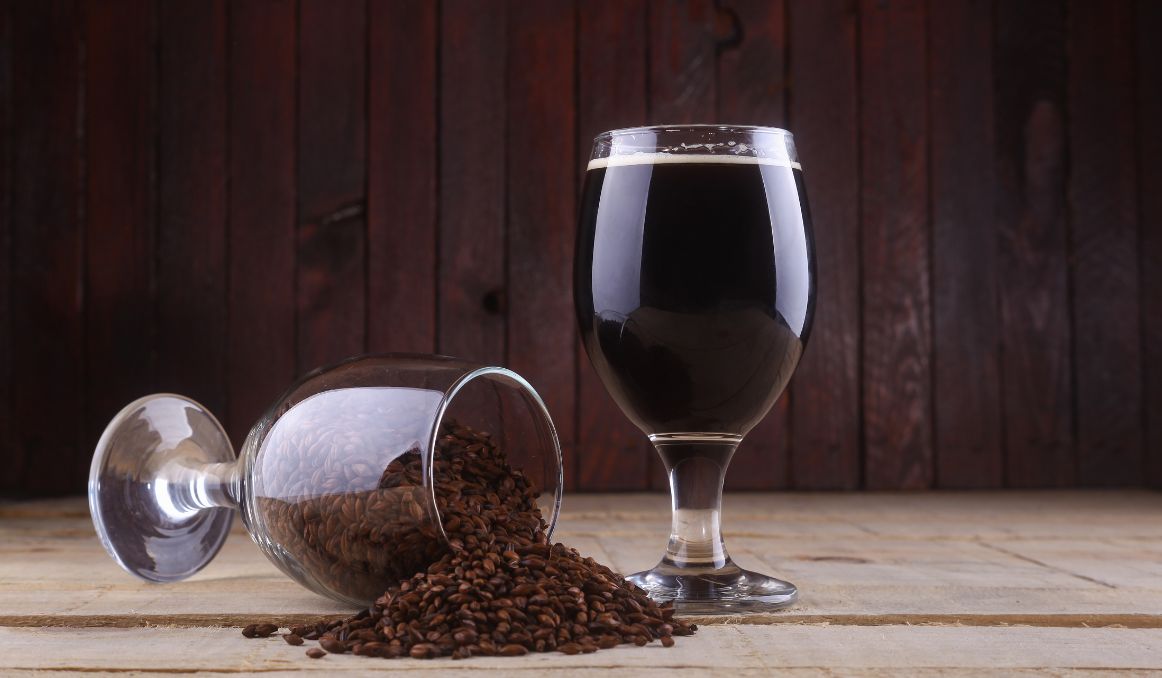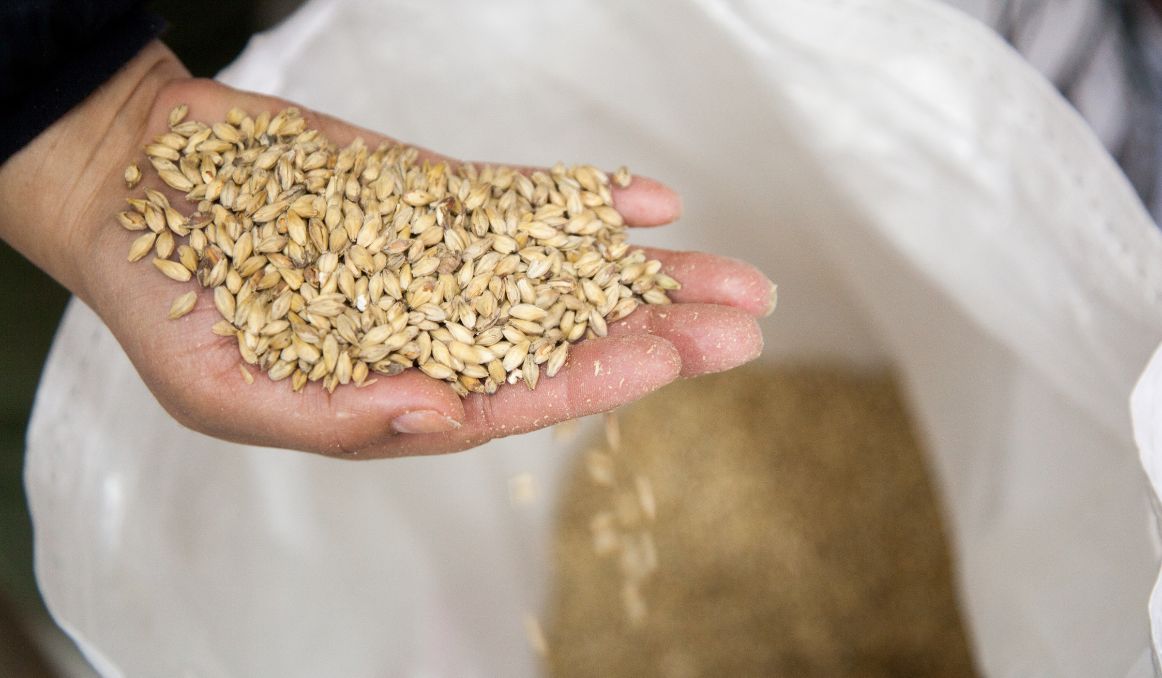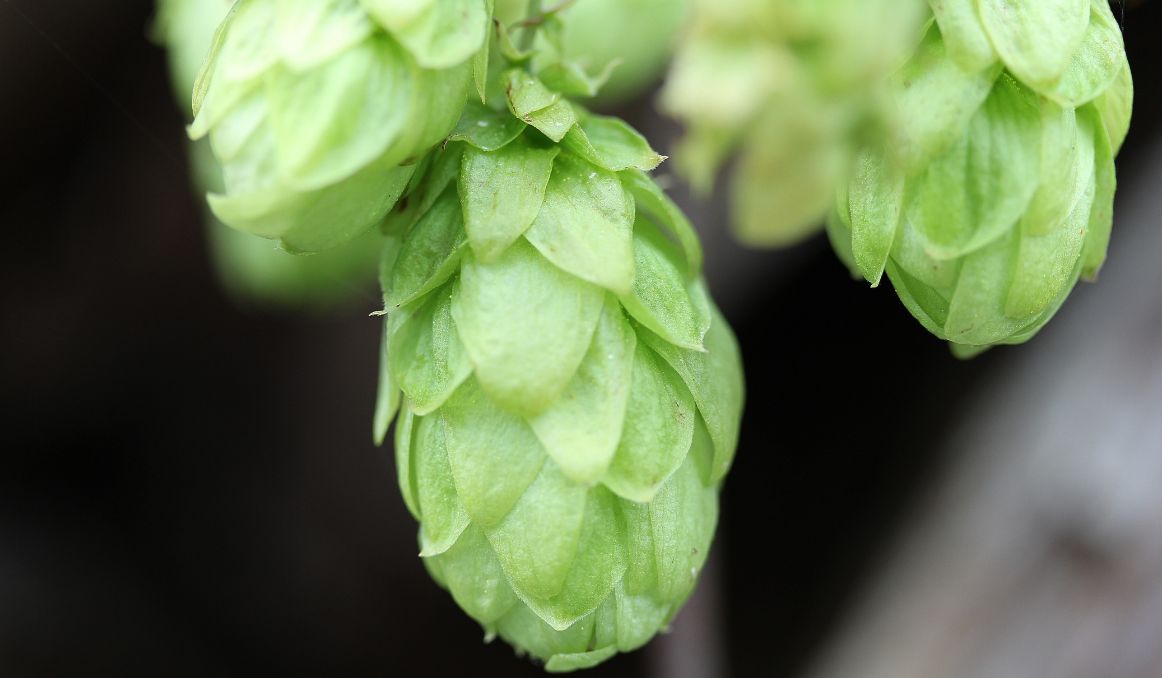What Does “Malty” Mean in Beer?
It can be confusing for those who understand the process of malting in beer to hear a beer described as “malty.”
Shouldn’t all beer be described as malty?
Perhaps.
So what does “malty” mean in beer, then?

Beer and Malt
To understand the malty description of beer, we must first understand the process beer undergoes, and where the term “malt” even comes from.
Some in the know will refer to malt as a grain, which is not technically true. There is no naturally growing grain called malt.
So what are we talking about?
Once upon a time, beer was just grain, water, and yeast.
Really, it was that simple.
Only… not really.
Beer, unlike wine or cider, was really a happy accident.
Wine and cider are actually quite simple. Crushed fruit exposed to grain makes wine or cider.
The process has not changed much in thousands of years. Even monkeys make their own wine in the wild and have wild and drunken weekends during ripe fruit season.
But beer requires a bit more effort.
The Discovery of Beer
Archeologists now believe that beer was more of a discovery than an invention, and then it has been curated over the years.
The story goes that a woman was likely out doing her daily harvesting of grain, most likely barley, and perhaps a storm struck.
She got distracted, left her basket of collected grain out in the storm, and took cover with her family for several days.
By the time she got back to her grain, it would have been soggy and soft, and it would have been covered in water that was now activated, fizzing and bubbling.
Of course, we’re talking thousands of years ago, so she would not have wasted a single drop of that freshly fallen rainwater or a bit of that grain.
She would have turned the soggy grain into bread dough and baked it, finding a new, lighter, fluffier bread than the unleavened bread everyone was eating at the time.
Yeast would have done the work rising that dough to a loftier height.
That same yeast would have converted all the sugars that soaked out of the grain and into the water into alcohol and carbon dioxide – essentially, the very first beer.
Upon serving the grain water to her family, they would have noticed a slightly, very slightly, euphoric effect, thanks to the very low alcohol present due to the very low sugar content in the grain.
Here’s where malt comes in.
The Malting Process

Over time, this woman, and the many women she shared her discovery with, and the many men and then businesses who crafted and curated the resulting recipes, would have discovered that the alcohol in the grain water actually purifies the water.
So now, you can take what may be infectious water from your river or stream, that may have made your family severely ill or even killed them, and you can “ferment” it, making it not only safe but also nutritious for your family.
For millennia, women served a lightly alcoholic ale to their families with each meal, providing hydration and nutrition those family members would otherwise not have had.
Another discovery in this process would have been malting.
You see, barely is not rich in sugars, but it is rich in starch. Yeast needs sugar to ferment. So when it finds a grain low in sugar, it can only ferment so much before stagnating or dying off.
But roasting, also known as kilning or malting, this grain, converts all those rich starches to sugars, making the grain an ideal attractant for yeast.
To take this process even further, brewers then began to grind or crack this malted grain in order to better expose the sugars to the water.
Now you have a thick, sugary liquid called wort, and the yeast gets super excited to get busy converting all those sugars to alcohol and carbon dioxide.
So, when we refer to the “malt” in beer, we are actually talking about the malted grain, be it barely, wheat, oats, or even rice.
Any grain you want to make beer with must be malted first for maximized brewing effect.
Hops

But what does all this have to do with describing a beer as “malty?” Again, if all beer is made with malt, isn’t it kind of redundant to call a beer malty?
It’s a bit like describing water as watery or fruit as fruity. Right?
Well, kind of, but not really.
What’s the difference?
The hops.
Down the road of the crafting and curating of the brewing process, people found ales and then lagers to be a bit too on the sweet side for their taste.
So they concocted a mix of herbs that would cut into the sweetness with a bit of bitterness.
At first, these herbs were a combination of several different plants – bog myrtle, yarrow, and wild rosemary. But eventually, brewers settled and agreed upon one plant – hops – to do the job of adding bitterness to beer.
Today, after the grain has been malted, cracked, boiled, and steeped, hops are added.
Different breweries treat the addition of hops differently, some use only a light touch, and others go to the extreme bitterness level of having double or triple hops in their beers.
So, when someone describes a beer as malty, what they are really saying is that it is not too “hoppy.”
Malty versus HOPPY BEER
Now you know, if you want to describe the flavor or aroma of your beer, you will usually start with the malt versus hops indicators.
If your beer taste chocolatey, nutty, bready, toasty, grainy, or even like coffee, you are referring tasting the malted grain.
If your beer tastes more flowery, grassy, woodsy, minty, or tea-like, you are tasting heavier hops.
Cheers!
Passionate about the beer and/or wine making process? So are we! If you’re interested in finding out how you can use our technology to control fermentation and monitor your yeast, save work hours and improve the cost-efficiency of your business, drop us a line at [email protected] or check out our product pages:
- Oculyze BB 2.0 (Better Brewing) Yeast Cell Counter App + Hardware
- Oculyze FW (Fermentation Wine) Yeast Cell Counter App + Hardware
Sources:


